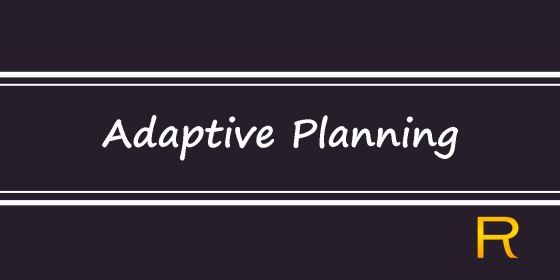Adaptive Planning

Adaptive planning is a key concept in the context of business agility, which refers to an organization’s ability to quickly and effectively respond to change, uncertainty, and disruptions in its operating environment. It involves the capacity to adjust strategies, tactics, and plans in a flexible and responsive manner. Being able to continuously change direction is an integral part of the Agile methodology and is often associated with Agile frameworks like Scrum and Kanban. Here’s a breakdown of what it means, its associated benefits, and challenges.
Adaptive Planning is:
- Continuous Iteration: It emphasizes ongoing and iterative planning processes rather than rigid, long-term plans. Teams regularly assess their progress and adapt their plans based on feedback and changing circumstances.
- Customer-Centric: It focuses on delivering value to the customer or end-user by adjusting plans to meet their evolving needs and preferences.
- Collaborative: It involves close collaboration between cross-functional teams, stakeholders, and customers to make informed decisions and adjustments.
- Embraces Change: It welcomes change as a natural part of business operations and incorporates mechanisms to respond to it effectively.
Benefits:
- Increased Responsiveness: Organizations can react quickly to changing market conditions, customer feedback, and emerging opportunities, ensuring they stay competitive.
- Improved Quality: Continuous feedback and adjustment lead to higher-quality products and services that better meet customer expectations.
- Enhanced Risk Management: By continuously evaluating and adapting plans, businesses can identify and address risks early. This reduces the potential impact of unforeseen challenges.
- Optimized Resource Allocation: Adaptive planning allows for better capacity allocation. This ensures that teams are working on the most valuable and relevant things.
- Greater Employee Engagement: Collaborative planning and decision-making empower teams and boost morale. As employees feel more involved and responsible for the success of the organization, it increases market impact.
Challenges:
- Cultural Resistance: Shifting from traditional, hierarchical planning to adaptive planning can face resistance from employees and leaders accustomed to more structured approaches.
- Complexity: Managing an adaptive planning process can be complex. It requires constant communication, coordination, and the ability to balance short-term and long-term objectives.
- Resource Constraints: Adaptive planning may require more frequent reviews and adjustments, which can strain resources, particularly in larger organizations.
- Lack of Predictability: Some organizations struggle with the uncertainty that comes with adaptive planning.
To effectively implement adaptive planning in the context of business agility, organizations need to foster a culture of continuous improvement, invest in training and coaching, and provide the necessary tools and frameworks for teams to collaborate and adapt rapidly. While there are challenges, the benefits of increased responsiveness and the ability to thrive in dynamic business environments often make adaptive planning a worthwhile endeavor.